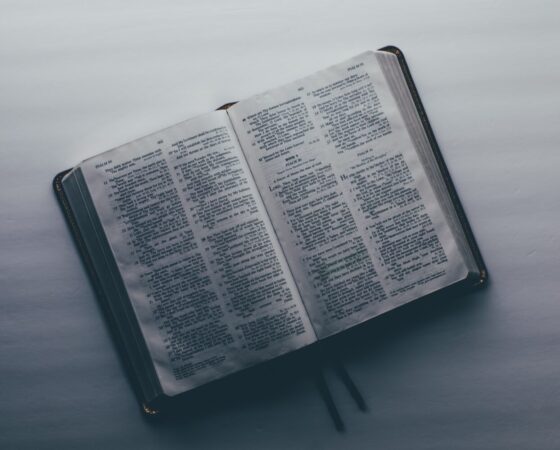30 May 2021 | John 3.1-17 | Richard O. Johnson |
There was a Pharisee named Nicodemus, a leader of the Jews. He came to Jesus by night and said to him, “Rabbi, we know that you are a teacher who has come from God; for no one can do these signs that you do apart from the presence of God.” Jesus answered him, “Very truly, I tell you, no one can see the kingdom of God without being born from above.” Nicodemus said to him, “How can anyone be born after having grown old? Can one enter a second time into the mother’s womb and be born?” Jesus answered, “Very truly, I tell you, no one can enter the kingdom of God without being born of water and Spirit. What is born of the flesh is flesh, and what is born of the Spirit is spirit. Do not be astonished that I said to you, ‘You must be born from above.’ The wind blows where it chooses, and you hear the sound of it, but you do not know where it comes from or where it goes. So it is with everyone who is born of the Spirit.” Nicodemus said to him, “How can these things be?” Jesus answered him, “Are you a teacher of Israel, and yet you do not understand these things?
“Very truly, I tell you, we speak of what we know and testify to what we have seen; yet you do not receive our testimony. If I have told you about earthly things and you do not believe, how can you believe if I tell you about heavenly things? No one has ascended into heaven except the one who descended from heaven, the Son of Man. And just as Moses lifted up the serpent in the wilderness, so must the Son of Man be lifted up, that whoever believes in him may have eternal life.
“For God so loved the world that he gave his only Son, so that everyone who believes in him may not perish but may have eternal life.
“Indeed, God did not send the Son into the world to condemn the world, but in order that the world might be saved through him. (John 3.1-17 NRSV)
Steven Richards-Price is a forest ranger in Wales. In a magazine article some years back, he revealed what is the most common question asked of the rangers by visitors to his park. It is not, “Where does this trail go?” It is not “How long will this hike take?” No, the most common question is much simpler: “Excuse me, can you tell me where the trail starts?” [Cited by Thomas Long at http://day1.org/3823-the_start_of_the_trail]
Where does the trail of the Christian faith begin? I suppose one could answer that in a number of different ways, but for Lutherans the first thing that might come to mind is this: The trail begins where some water is poured on one’s head, and the words are spoken: “I baptize you in the name of the Father, and of the Son, and of the Holy Spirit.”
That’s the beginning of the trail. It may not always be the beginning of the journey. Sometimes one has to travel a ways to get to the trailhead. And sometimes one may just stand at the trailhead for a while, without taking a single step. But the trail begins with baptism.
Other questions
Of course those other questions—“Where does it go? How long does it take?”—those are interesting questions, too, and the answers aren’t nearly as simple. But on this Festival of the Holy Trinity, our lessons help us sketch out a map of the Christian journey, a map of the trail. It is not always an easy hike! It’s definitely at least a Class 3 trail—sometimes maybe more.
John Buchanan, the editor of The Christian Century magazine, told a story about a baptism he performed as a Presbyterian pastor some years ago. The little boy being baptized was about two years old. The pastor spoke the words similar to the words in our Lutheran liturgy: “Child of God, you have been sealed by the Holy Spirit and marked with the cross of Christ forever.” The little boy looked up, and in his sweet little boy voice responded, “Uh oh!” [Christian Century 25 Jan 2012]
“Uh oh” indeed! The trail that begins in our baptism in the name of the Father, Son and Holy Spirit leads to the cross. That’s what Nicodemus hears in this morning’s gospel lesson: the Son of Man must be lifted up—that’s the cross. It is what St. Paul says as well: we are heirs with Christ, “if, in fact, we suffer with him.” Yes, the trail can be difficult. It will require self-sacrifice. It will require forgiveness, turning the other cheek. It will require dying to sin. After all, it leads to a cross.
You need a map
The trail can also be quite mysterious. If you set out thinking that everything is going to be clear, you’d best think again. A Class 3 trail, one website has said, “will be steep and almost certainly require route finding skills. At this point, you better have a map and compass in your pack and know how to use them.”
Again we see this in the story of Nicodemus. He comes to Jesus with what he thinks is going to be some simple questions. But the more he asks, the more confused he gets. Sometimes the life of faith is like that. Sometimes we simply do not know the answers.
But that is to be expected when we are hiking into the mystery of God. I love the Isaiah passage this morning: “Holy, holy, holy is the Lord of hosts!” The word “holy” literally means something like “different”—so utterly different that we can hardly grasp it. When we are drawn into the mystery of God, we find ourselves so often crying out with Isaiah: “Woe is me! I am lost!”
I don’t know about you, but the older I get, the more mysterious I find the Bible. There are stories there that leave me breathless, lots of them. I so very often feel like the disciples in the boat with Jesus after he has stilled the storm: “Who is this?” they ask. When we take this trail that begins with baptism, we are wandering deep into a mystery that we cannot understand. The deeper we go, the less we understand.
Family
But the baptismal trail also leads us into a community, a family. “All who are led by the Spirit of God are children of God.” Children of God. Part of God’s family.
Now think for a moment about what it means to be part of a family. There are certain kinds of traits that that help to identify someone as part of a given family. In our family, we sometimes have joked about the “Johnson ears”—and if you look at photos going back some generations, you can see that there is something to that.
But family traits are not always physical. At my grandfather’s funeral, all his siblings were present except Aunt Mabel. My mother commented that this was probably just as well, because “Mabel isn’t really an Anderson.” I asked her what she meant, and she explained that Aunt Mabel was a very emotional person, unlike the rest of the family, all the typically stoic Swedes who seldom expressed emotion. So Mabel never went to family funerals or weddings because she would spend the whole even crying buckets of tears, and everyone else would be uncomfortable!
When we take this baptismal trail, it leads us into the family of God—this family where God is the Father, and where all the children share certain traits. They are not physical traits, but spiritual ones. There’s a song we used to sing with our kids about the fruits of the Spirit. Part of it went like this:
Love is one of the fruits of the Spirit,
Love is part of God’s plan for me.
Love is one of the ways I am like him . . .
Those fruits of the Spirit, you see—love, joy, self-control, gentleness and the rest—those are the traits of this family. They are the “ways we are like” our Father.
Wonder upon wonder
And that is finally the answer to where this trail leads. It leads us to the very heart of God, to the place where we receive all the gifts of God—“heirs of God and joint heirs with Christ,” Paul says. It is the place where we began more and more to resemble our Father in heaven. It is the place where, as the Psalmist puts it, “The Lord shall give his people the blessing of peace.”
I love a story about St. Brendan, 5th century Irish missionary. Brendan was proclaiming Christ to a pagan chieftain, urging him to be baptized. “Supposing I accept your gospel,” said the chieftain. “Supposing I agree to follow this Way. What will I find?” Brendan replied, “You will find wonder upon wonder, and every wonder true.” And that, too, is what we find on this journey: wonder upon wonder.
And how long does it take, this baptismal trail? It takes forever. It takes one’s whole life. It becomes one’s whole life—the life of faith. The life of the child of God. Your life.
Pastor Richard O. Johnson
Webster, NY
roj@nccn.net

